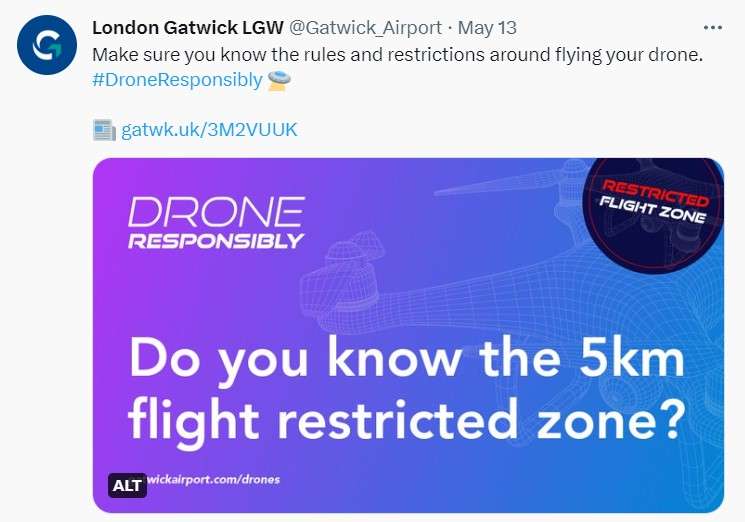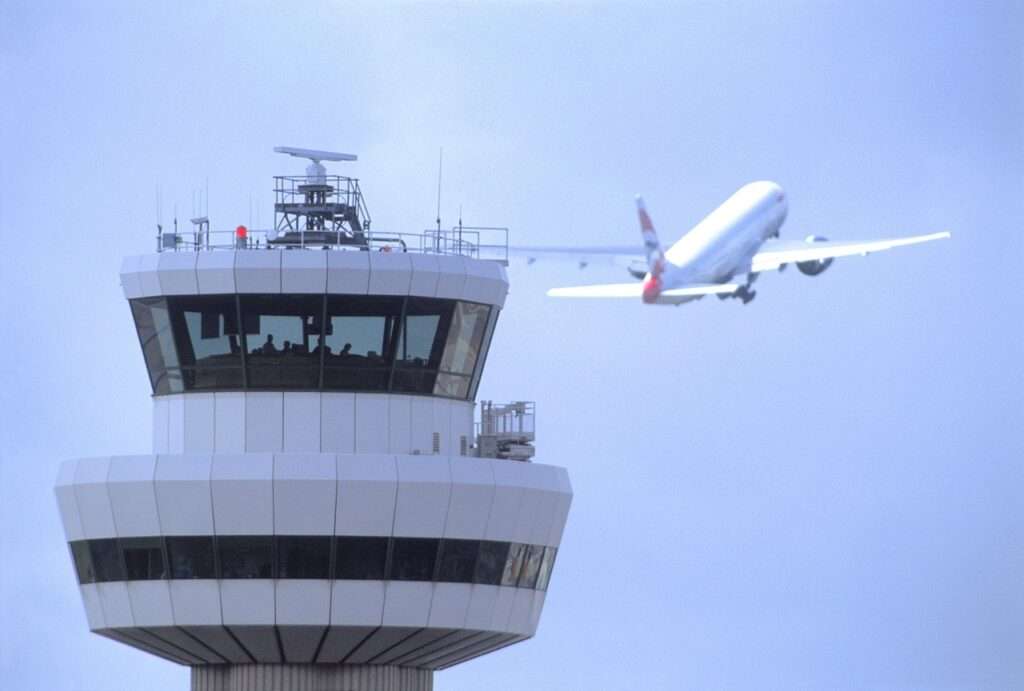Operations at London Gatwick Airport were suspended temporarily yesterday afternoon, Sunday May 14, as a precautionary measure following the report of a drone sighting close to the airport facility.
The report of suspected drone sighting close to Gatwick airport yesterday resulted in the halting of flight operations from 1:44 PM local time whilst authorities carried out an investigation.
Twelve scheduled inbound flights were forced to divert to alternate airports before London Gatwick finally reopened at 2:35 PM local time, following the completion of their investigation.
Affected flights were diverted to a range of alternates including Stansted, Southend, Heathrow and Luton. Some inbound flights declared general emergencies, squawking 7700 as a standard ‘low fuel’ precautionary measure.
Several departures from the airport were also suspended whilst the reported sighting was investigated.
A British Airways scheduled flight was forced to divert to Stansted, where it refuelled before returning to Gatwick.
[monsterinsights_popular_posts_inline]
Drone and UAS operations
It is illegal to operate a drone, or unmanned aerial system (UAS), within 5km of any airport or above 400ft (approx. 120m) above ground level.
There was a certain irony to the fact that London Gatwick airport had posted a reminder reinforcing the rules and restrictions around drone operations to its social media pages on Saturday May 13 – the day before the incident.

The UK, like many other countries, has experienced various problems and concerns regarding drones near airports. These issues primarily revolve around the potential risks to aviation safety and security.
Individuals flying drones without proper authorization and outside the designated areas pose a risk to manned aircraft in the vicinity.
Such actions can lead to collisions or near-misses, potentially causing accidents and endangering the lives of passengers and crew.

There have been reported instances of drones coming dangerously close to aircraft during takeoff or landing, risking collision.
Commercially available drones are typically under 25 kg in weight, with the smallest being less than 249 g.
Even small drones can cause substantial damage if they collide with an aircraft’s critical components, such as engines or flight control surfaces.
Drones are typically equipped with GPS or other wireless communication technology, which can also potentially interfere with the navigation systems of aircraft or disrupt communication between pilots and air traffic control.
Summary
To address these problems, the UK has implemented regulations and measures to enhance drone safety and security.
The regulations include registration requirements for drone operators, mandatory drone pilot training, and no-fly zones near airports.
Additionally, technology such as geo-fencing and counter-drone systems are being explored and deployed to mitigate the risks associated with unauthorized drone activities.
London Gatwick airport previously experienced major disruptions over a three-day period in December 2018 following drone reports.
During that time the airport made the decision to cancel or divert approximately 1000 flights, facing criticism for the time that it took to reopen to flight operations









